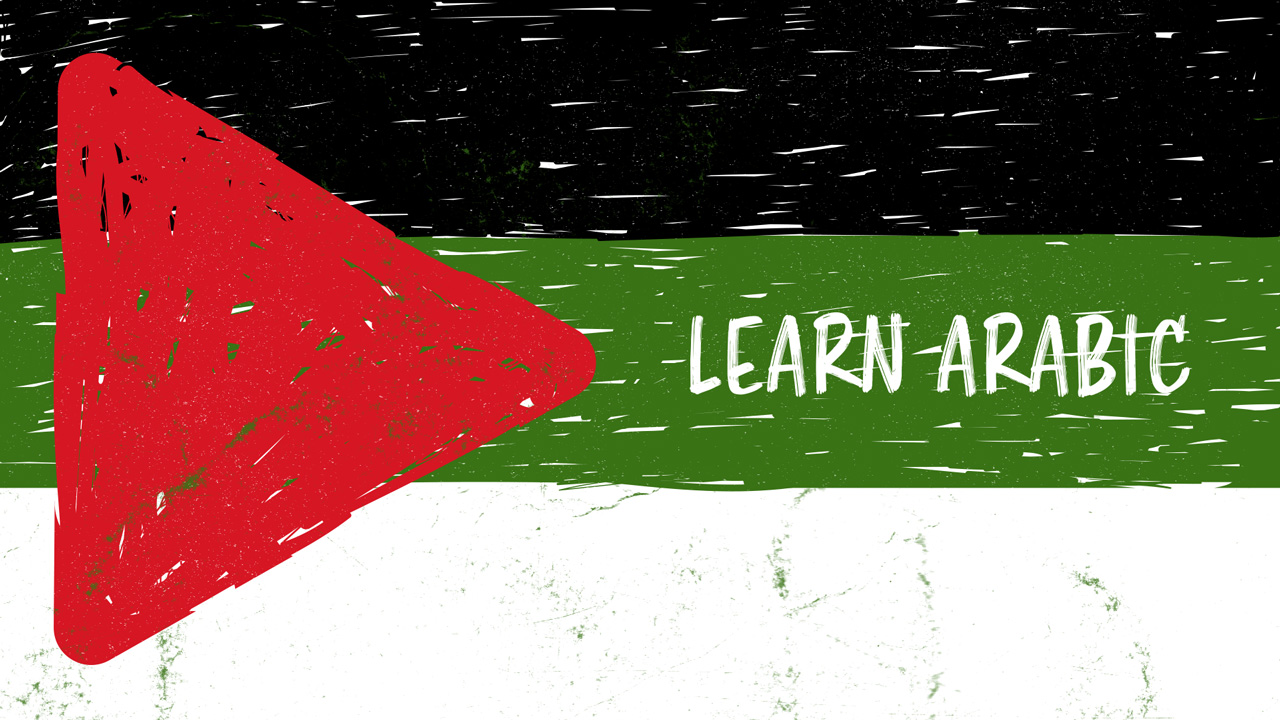How to Learn Arabic Right the First Time
Arabic is a rich and fascinating language, and one of the most widely spoken in the world. In this article, I’ll explain why I think Arabic is a great language to learn. I’ll clear up a few myths, explain how to work out which kind of Arabic is right for you (spoiler alert: there’s more than one), and I’ll explain some basics of the language.
Table of contents
WHY LEARN ARABIC?
There are many good reasons to learn Arabic. Here are four.
Arabic is an extremely versatile language. It’s the fifth most spoken language in the world, and twenty-five countries consider Arabic an official language. There aren’t many other languages that you can use in this many different places.
Arabic will help you to access one of the world’s most historic regions. From Marrakesh to Cairo, Beirut to Damascus, Jerusalem to Muscat, Arabic will help you to navigate these ancient cities and uncover their inner secrets – much more easily than you ever could in English.
Arabic is more than just a means of communication. An understanding of the language will also help you to appreciate the rich artistic, musical, literary and religious life of Arabic-speaking countries.
You’re likely to be appreciated. Native speakers of Arabic know that foreigners are often reluctant to learn their language. This means that any ability to speak Arabic is typically received warmly, regardless of how imperfect your grammar may be!
SOME ARABIC MYTHS
Let’s clear up a few myths that can put people off learning Arabic.
Arabic is too hard unless you’re a language superstar
It’s true that Arabic is a tricky language. It ranks somewhere below Japanese, Mandarin and one or two others when ranked by difficulty for native English speakers to learn. But there’s no special talent required to learn a language, including Arabic. Often, people who feel they’re not ‘good’ at languages just weren’t motivated to learn them at school, or had some other negative experience.
Success with Arabic is mainly about knowing what you’re aiming for and finding ways to practice as much as possible. It’s also really important to know that there are different kinds of Arabic, some quite a bit easier than others – more on this later!
Reading right-to-left will make my brain hurt
Arabic script reads in the opposite direction to English and people sometimes assume that this will be difficult to manage. In fact, you hardly need to think about it. Try reading English from right to left: it simply doesn’t work. Arabic is the same. Once you’ve learnt the letters, they show you where to go.
The script is indecipherable
Any new script is confusing at first. This includes the letters you’re reading now when you first encountered them as a child. As you practise Arabic, the letters will become easier and easier to recognise, and before long you’ll be recognising whole words – in other words, reading!
The Middle East is really dangerous
It’s true that there are parts of the region that are, unfortunately, currently off-limits due to conflict. But these are limited and the Arabic-speaking world is a big place, stretching from North Africa, across the Levant (Syria, Lebanon, Jordan, Palestine and Israel), through Iraq, and beyond to the Arabian Peninsula. Moreover, street crime rates are often lower than in Western cities so it can actually be safer.
BUT WAIT: THERE’S NO SUCH THING AS “ARABIC’
In my own journey to learn Arabic, in London, Amman and Beirut, I met dozens, probably hundreds, of Arabic students and teachers. We would often compare our experiences of learning the language. Based on these conversations and my own experience, I wrote a book to help new learners succeed with the language: ‘Thirteen Ways to Make a Plural: Preparing to Learn Arabic’.
I’ve squeezed as much of the advice from the book into this article as I can. But the single most important piece of advice I’d give anyone starting out with the language is that there is no such thing as “Arabic”. There are in fact various forms of Arabic. Before you dive into the language it is essential that you understand what they are – and work out a plan that’s right for you.
Here’s what you need to know.
The difference between Modern Standard Arabic and regional Arabic dialects
Getting this bit right could save you a whole lot of time down the line. The big division is between (1) Modern Standard Arabic, otherwise known as MSA or standard Arabic, and (2) colloquial Arabic, also known as dialect.
Standard Arabic
Standard Arabic is formal, and often regarded as “proper”, Arabic. It is consistent across the Arabic-speaking world and used in news reporting, speeches, very formal settings, and almost all written material. The vocabulary is very large and the grammar is complex. For everyday, informal settings, it is cumbersome, unwieldy and sounds inappropriately formal to a native speaker’s ear. Most people will understand if you speak in standard Arabic but they will usually respond in colloquial Arabic.
Colloquial Arabic
Colloquial Arabic refers to the various local dialects found across the Arabic-speaking world. Simplifying a bit, Jordan, Palestine, Syria, and Lebanon broadly share one dialect. Iraqi, Gulf, and Egyptian Arabic are three further main dialects. The Arabic spoken in other north African countries (Libya, Tunisia, Morocco, and Algeria) forms another dialect group, with some significant variations.
Colloquial Arabic has less grammar than standard Arabic, a smaller vocabulary and simpler verb conjugations. Less elegant but more practical, it is the language of daily life and used among friends, family, and colleagues in all kinds of social and work settings.
An example of the difference between standard and colloquial Arabic
Here is an example of how an everyday sentence can vary between types of Arabic. To ask “would you like to sit inside because the weather is cold?” in standard Arabic, you would say:
هل تريدون ان تجلسوا في الداخل لان الطقس بارد؟
Written in Latin script, this is: hal tureeduna an tajlisu fi ad-daakhil li-anna at-taqs baarid?
In the colloquial Arabic of the Levant region this might become:
بدكم تقعدو جوّا عشان الجو بارد؟
Or: bidkum tuq‘udu juwwa ‘ashaan aj-jaww baarid?
Even without understanding the words, you can see that the colloquial version is shorter. This is mainly because the formal sentence structures of standard Arabic, which can be rather long-winded, are removed. In terms of the vocabulary, very little remains of the standard Arabic version except for the final word, baarid, which means cold. Typically, everyday topics have different vocabulary in colloquial Arabic, like in this example.
BUILD YOUR ARABIC ROADMAP
First, ask yourself why you want to learn Arabic
Now that we’re clear on the ‘menu’ when it comes to the types of Arabic, it’s important to be clear on what you’re learning Arabic for. This will ensure you’re heading in the right direction from day one.
For example, do you want to learn Arabic as a professional skill? To smooth the way while travelling in Arab-speaking countries? To understand the Quran? To use for daily life while living in the region? To speak to your partner’s Arabic-speaking parents? Or perhaps a simple fascination with the language?
The answer will determine the kind of Arabic that you need.
In some cases, the answer is easy: if you’re going to be travelling in Egypt, for example, your best choice would be colloquial Egyptian Arabic, the language of daily conversation. If you want to be able to read a newspaper and understand al-Jazeera, you’ll need standard Arabic.
If you want to use Arabic in a professional context, it depends how you’ll be using it so you’ll need to dig a bit deeper. A journalist looking to build contacts and research local stories without a translator, for example, would need colloquial Arabic. But a researcher planning on reviewing library archives would need to be able to read, requiring standard Arabic.
Next, consider the level you want to achieve and the time you have available.
The big point here is that colloquial Arabic is much easier, making it faster to learn. You can expect to be having simple conversations in a couple of months. Modern standard will take longer – more like three to four months to reach this level.
Here’s a table of the approximate time it’s likely to take to reach different levels, based on full-time study and regular practice.
| Description | Modern Standard | Colloquial / Dialect (Harder to estimate as strongly influenced by amount of practice outside classroom. These timings assume significant real-life practice and includes learning to read Arabic. ) |
| Competent professional use | 18 months | (Dependent on extent of real-world practice, difficult to estimate) |
| Discussion of substantial issues | 8-9 months | 4-5 months |
| Discussion of familiar topics | 5-6 months | 3-4 months |
| Simple conversation | 3-4 months | 1-2 months |
| Basic phrases and questions | 2 months | < 1 month |
Check that you can commit the time you’ll need to reach the level you want in the kind of Arabic that works for you. And that’s your roadmap.
BEGINNER TIPS FOR LEARNING ARABIC
Next, let’s look at the language itself. Most of what follows here will refer to Modern Standard Arabic, because that is the ‘base’ of the language from which dialects have evolved.
Arabic script
At the most basic level, Arabic is like English: letters form words, and words form sentences. This is a huge advantage compared with languages such as Japanese or Mandarin, where characters are used to represent words and must be memorised individually.
Arabic pronunciation is also very regular – meaning that if you can read it, you can say it – unlike English which is full of irregular spellings and letter combinations. The twist with Arabic is the vowels, which I’ll come to later.
First, I’ll look at Arabic sounds and the alphabet.
The Arabic alphabet has 28 letters. There are no capitals, and many are based on similar shapes which makes learning them straightforward.
Many of the letters have sounds that are also found in English. Here are some of them:
- ب – ‘b’
- د – d’
- م – ‘m’
- ل – ‘l’
- ج – ‘j’
- س – ‘s’
- ت – ‘t’
- ر – ‘r’
Other letters represent sounds not found in English. These include:
- ق – a ‘q’ sound produced half way down the throat
- ع – sounds a bit like a momentary strangulation
- ح – a heavy ‘h’ produced deep in the throat
- ص – a heavy ‘s’ produced with the back of the tongue higher in the mouth
- خ – a rasping sound usually written in English as ‘kh’
These unfamiliar sounds can feel intimidating at first but don’t be put off. They’re not really hard, they’re just unfamiliar. With a little practice, you’ll be able to say them all. And it doesn’t matter if your pronunciation isn’t perfect. Most of the time people will still be able to understand you.
You can learn the alphabet in just a few hours. Arabic is a cursive script, meaning the letters generally join those before and after. In many cases the shape is modified to allow the join. It’ll take a few more hours to get the hang of how the letters connect with one another. By then, you’ll already have taken the first step toward reading – and Arabic will no longer be merely squiggles and dots!
Learning without the Arabic script
If you’re learning colloquial Arabic you have the option of skipping Arabic script altogether, since it can be approximated with the Latin script.
For example, “studying Arabic grammar is fun” would be written in Arabic as:
دراسة قواعد اللغة العربية ممتعة
This will take a bit of study before you can read it. But simplified into Latin script, it reads:
Daraasat quwa’aid al-lugha al-‘arabiya mumti’a
Sure, there are still a few sounds that you’ll need to learn to pronounce. But that aside, you’re already reading and speaking Arabic.
This approach can make learning Arabic vocabulary and starting to speak much faster. The downside is that the pronunciation is less precise and you won’t get that deeper understanding of the patterns and structures of the language that comes with learning the writing system.
I therefore don’t recommend Latin script for those learning Modern Standard Arabic. But if you’re learning colloquial, particularly if you’re interested in just picking up the basics and are not concerned about reading, it’s a great way to get speaking more quickly.
Vowels
You may have wondered where some of the vowels are. Here’s the catch: the short vowels in Arabic aren’t written. You’ll see the long vowels represented by ي (ee), و (oo) and ا (aa). But while the short vowel sounds can be written as symbols above or below the letters they are usually omitted, other than in religious texts and children’s books.
For example:
- girl = بنت (pronounced “bint”) This consists of the letters ب (‘b’), ن (‘n’) and ت (‘t’) but you’ll notice that the “i” isn’t shown.
- countryside = بلد (pronounced “balad”) Here, ب (‘b’), ل (‘l’) and د (‘d’) combine to make the word. Again, the vowels are left out.
At first, this can feel confusing. But as you become more familiar with the language, it becomes easier. The vowels for frequently used words will stick through regular use. And the vowels of longer words are often predictable from the shape of the word thanks to the regular patterns of Arabic.
Verbs and patterns
Let’s look more closely at this idea of patterns. At the heart of Arabic is its remarkable verb system, whereby basic verbs are adapted to produce related words. Once you get a feel for it, it will give you a huge advantage in learning the language.
Here’s how it works.
Almost all verbs are based on three root letters. These root letters are expanded in a variety of ways, often following predictable patterns, to produce new words.
For example:
درس (darasa) is a basic verb made up of the three root letters س ,ر ,د (d, r, s). It means “to study”.
Doubling the middle letter of a basic verb (by placing a symbol known as a shadda above it) often creates the meaning of ‘doing’ the action to someone else. Here, we get درّس (darrasa), meaning “to teach” – in other words, the idea of ‘study’ directed at another person.
Verbs provide the basis for related nouns as well. Using the same example:
- درس – “dars”, a lesson or class.
- دراسة – “daraasa”, studying or a study/survey.
- مدرسة – “madrasa”, a school. Adding an ‘م’, or ‘m’ to the start of a word is a frequent way of creating the place associated with the meaning.
- مدرّس – “mudarris”, meaning ‘teacher’. Here, the root letters have been modified according to a common pattern to produce the word for the person who ‘does’ the verb.
- تدريس – “tadrees”, which means ‘teaching’. Here, two letters, ت and ي (‘t’ and ‘ee’), have been added to the verb درّس, which as we saw above means “to teach”. This follows a standard pattern used to produce the equivalent of an English noun ending in ‘-ing’, or gerund.
Learning a set of similar words around a theme is much easier than memorising a bunch of disconnected words, as is the case with most languages. In Arabic, new words will often resemble one you already know, providing a memory hook. This also means that you can sometimes guess the meaning of new words from the root letters.
Creating sentences
Here’s how we can take some of the words above to make a simple sentence.
First, a little more vocabulary:
- كل – every (“kul”)
- يوم – day (“yawm”)
- في – in/inside (“fee”)
We’ve already seen that درس means “to study”. To make this “she studies”, just add a ت, making تدرس (“tadrus”).
Now, you can already say:
البنت تدرس كل يوم – the girl studies every day (“al-bint tadrus kul yawm”)
Or:
البنت تدرس في المدرسة – the girl studies in the school (“al-bint tadrus fil-madrasa”)
After reading one blog, you’re already seeing how to construct sentences. Arabic may be classed as a hard language, but with the right approach, it doesn’t have to be!









Social